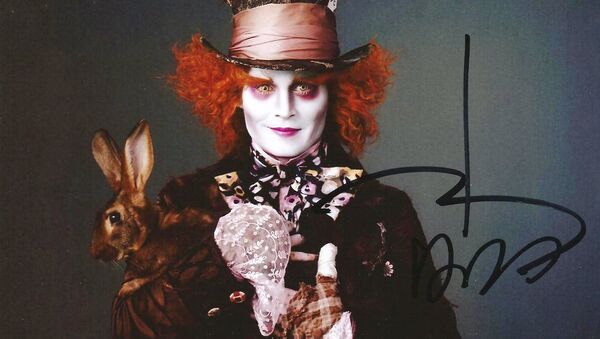"We've been making and remaking the films for over a century," Franziska Kohlt, a Victorian psychology, literature and dreaming academic told Sputnik.
"The first one was an eight minute silent film that was released five years after Carroll's death. Every single one reflects more of our time. Through Alice we interrogate our own times, Alice holds up a mirror to society. She transcends it and goes beneath it to look at the inner workings of society, taking a psychological look and traveling into our dream space where we reflect upon things."
Alice in the asylum: @frankendodo on Wonderland & the real mad tea parties of the Victorians https://t.co/oxIWR0C3D3 pic.twitter.com/aXkdYC6kRV
— Oxford University (@UniofOxford) June 1, 2016
Kohlt believes that the status and interest in insanity has been a constant since the Victorian period and Lewis Carrol's book with illustrations by John Tenniel contributed to shape the way in which Victorian society visualized insanity.
"The only asylum we know for sure Carroll visited was one in which the 'inmates' made hats to sell," said Kohlt.
"The illustration of the hatter for instance illustrates what the Victorians thought madness looks like. In an illustration in Through the Looking Glass, for instance, the Hatter, whom we find locked up in a cell, displays all Victorian characteristics of a 'madman', a large head, deep wrinkles, and confused hair, which all symbolized madness."
"This draws on the image of the Victorian lunatic asylum; it reinforced what people thought lunatics looked like."
Kohlt says Victorians had strict ideas on how the world should work and tried to define identity.
"Children were confronted with morality tales — and when Alice dreams about them, her moral poems are mocked in her dreams, in the end she realizes all the stuff in the real world is madness and dismisses it as "nothing but a pack of cards."
Madness, according to Kohlt, remains very appealing in films and games. In the new movie, Alice is in an asylum, her ambition is deemed to be her madness, Kohlt explains, "her boundaries and interpretations of the world continue to be interrogated through madness."
"Taking an outside figure that regards what is going on in the world as madness is an attractive trope in any story," said Kohlt, who goes into great detail about the relationship between Lewis Carroll and the Victorian obsession with mental illness in her recent article, "The Stupidest Tea-Party in All My Life."
"Madness then — as it does now — threatens the status quo, it undermines rationality, unleashing intense creativity — and with it, the loss of control," Kohlt said, suggesting that society has been allowed a view through the "looking glass" into the world of insanity since Carroll's first book about Alice — and has continued to do so for more than a hundred years.



